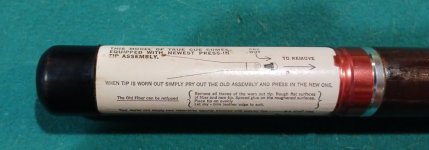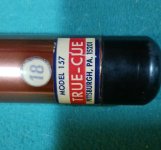I happen to know a lot about the aluminum cue sticks because they were invented by a friend of mine. His name was Anthony Amerolla. He was a quality person who had an amazing aptitude for inventing things. I know that he held several different patents for several different inventions. We played lots of pool together at the "Hawk's Nest" which was a room owned by Bernie Swartz (the best 9 ball player I knew of during the 60's), it was where Billy Incardona spent many hours and where the world's best pool players would come for gambling and tournaments. Most people knew Anthony Amerolla as "Tony Merolla". Prior to him inventing the aluminum cue stick, sheets of aluminum could only be formed into cylindric or conical shapes. Tony invented a process which he called "swedging". Using this new process, he was able to alter the shape of an aluminum cylinder into a pool cue shaft which transitioned from one diameter into a different diameter. He soon founded a company called "True Cue Co." which was located on Butler Street in the Lawrenceville section of Pittsburgh. Not to rest on his cue stick laurels, shortly after inventing the aluminum cue stick, he went on to invent the ALUMINUM SOFTBALL BAT! I know that there were some legal challenges to his softball bat patent and that he settled for a royalty on every bat that was sold by whichever company became the industry leader.
I don't know what the value of one of the aluminum cue sticks might be. I do know that they were particularly functional in taverns on 6' and perhaps 7' tables because of their durability. They were made in a variety of pretty bright colors; I don't think that any of these cues were ever used by a top level player. I also don't think that any of them were ever configured as 2 piece cues. You can check with me personally, if you have any additional questions.





